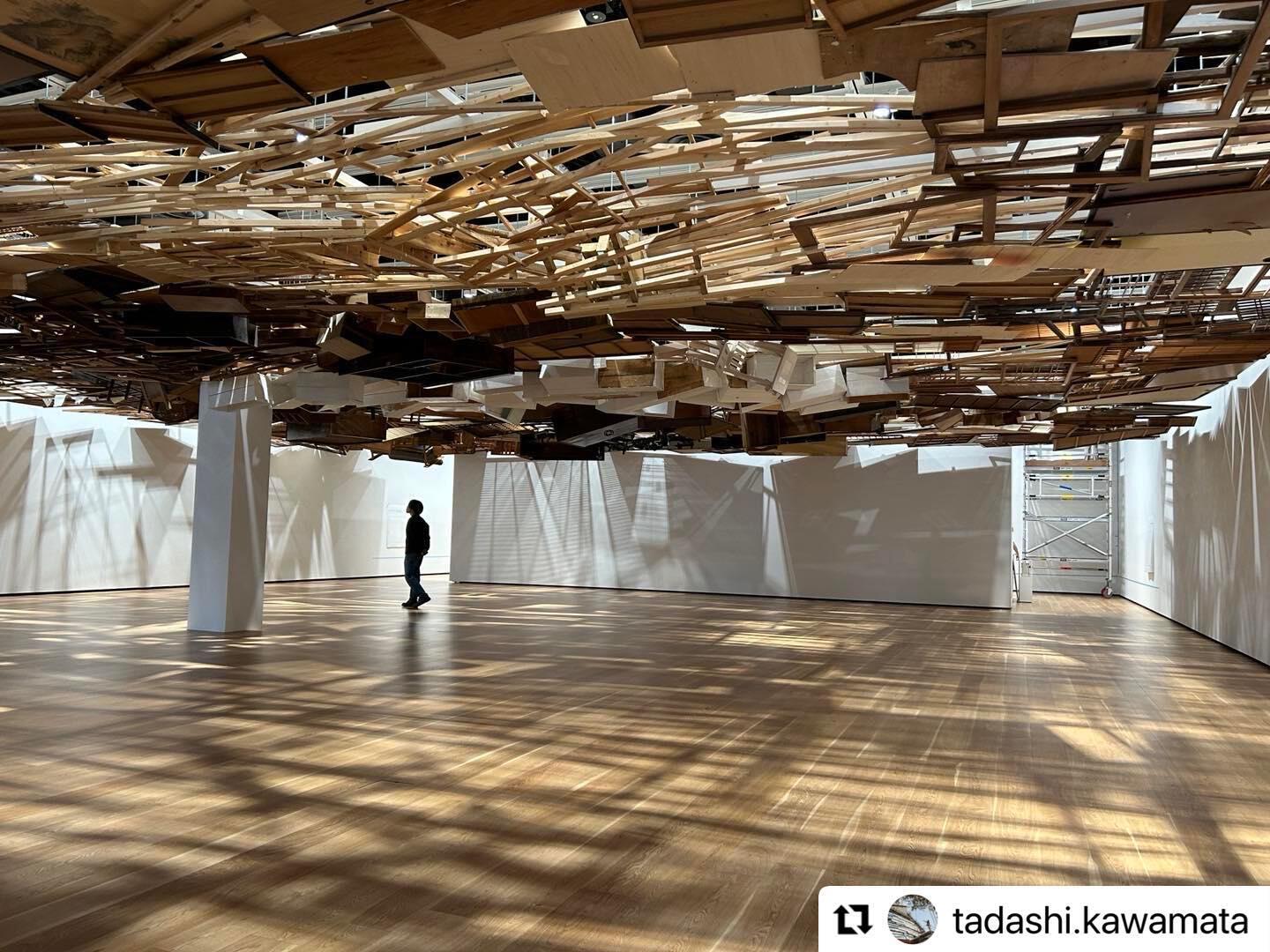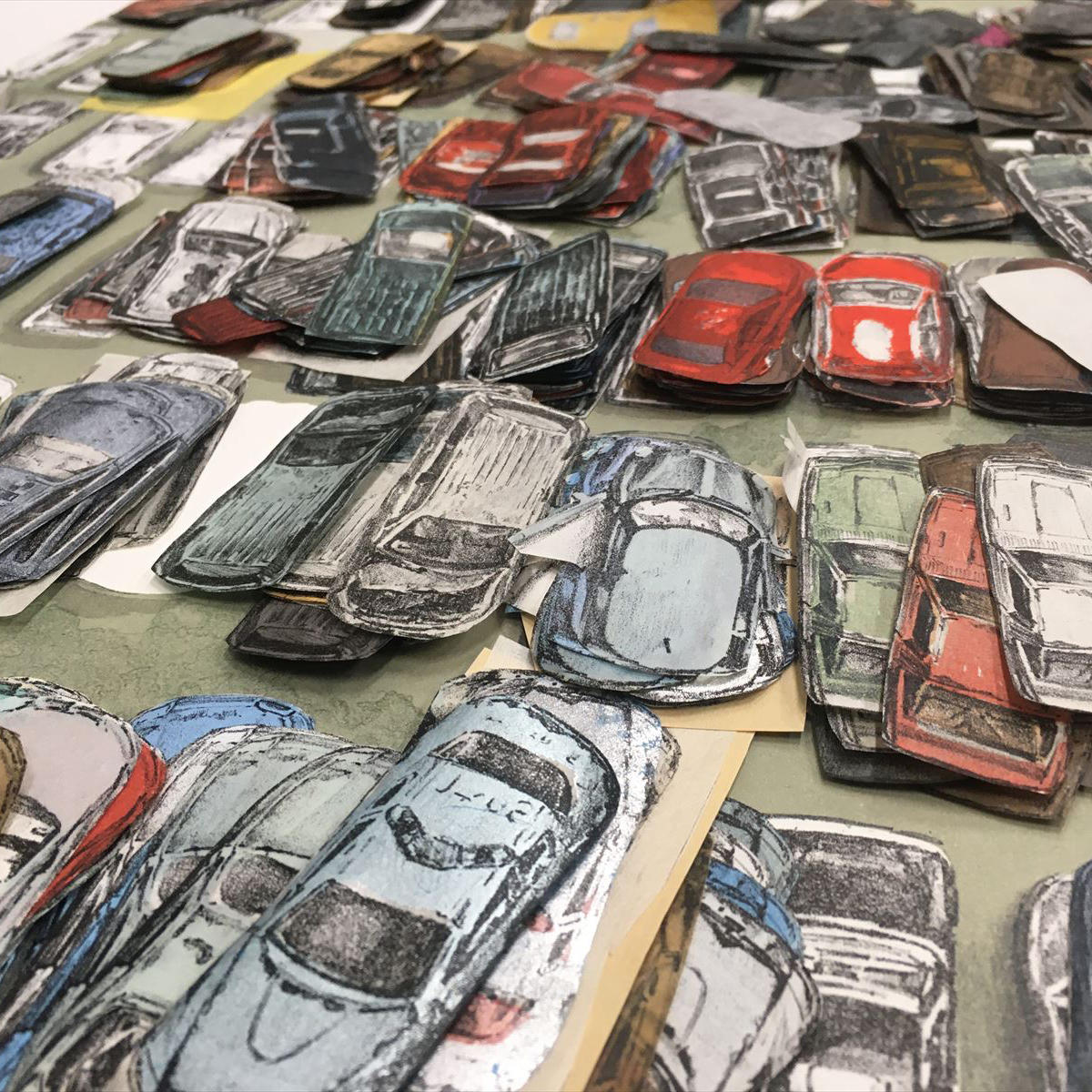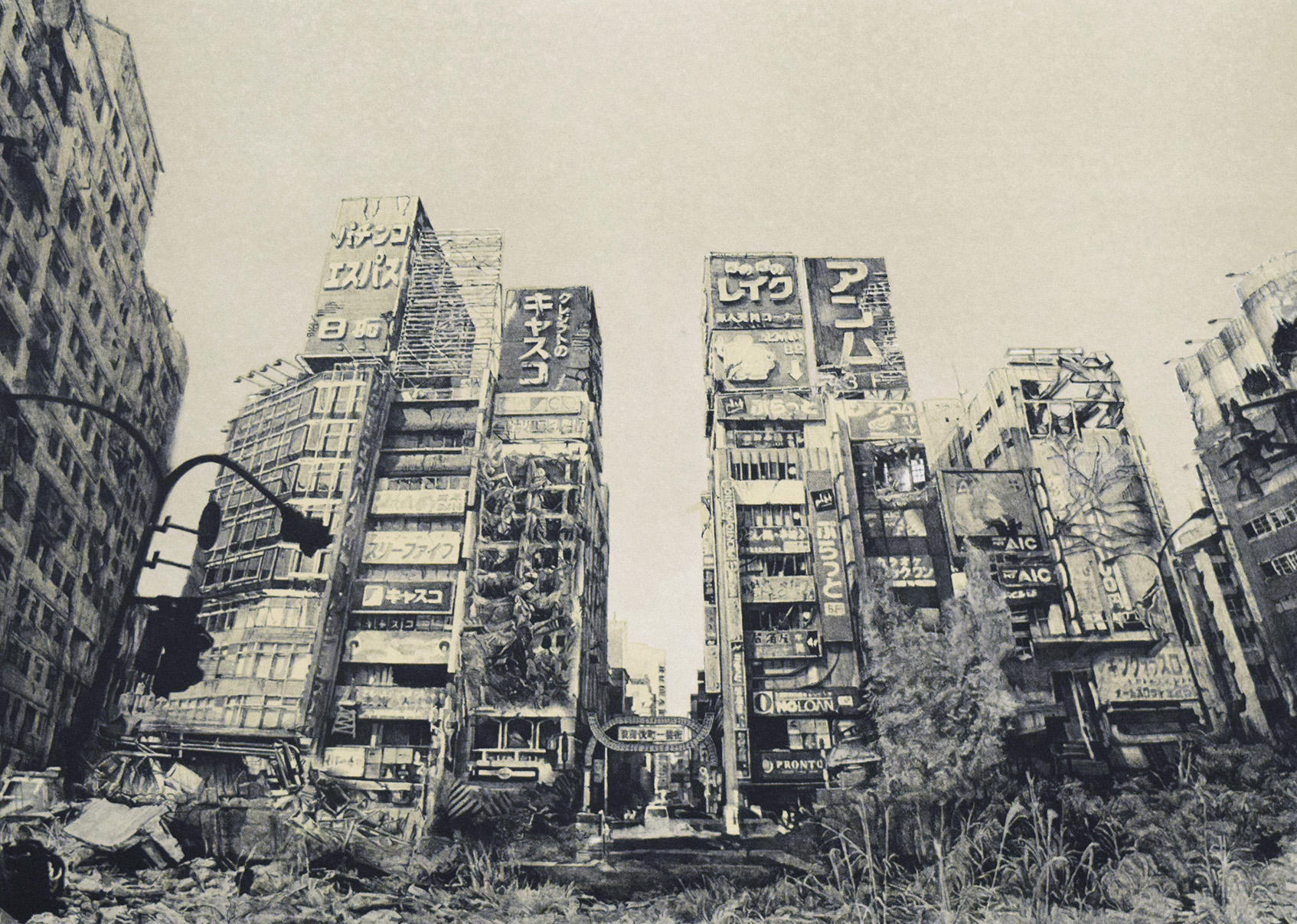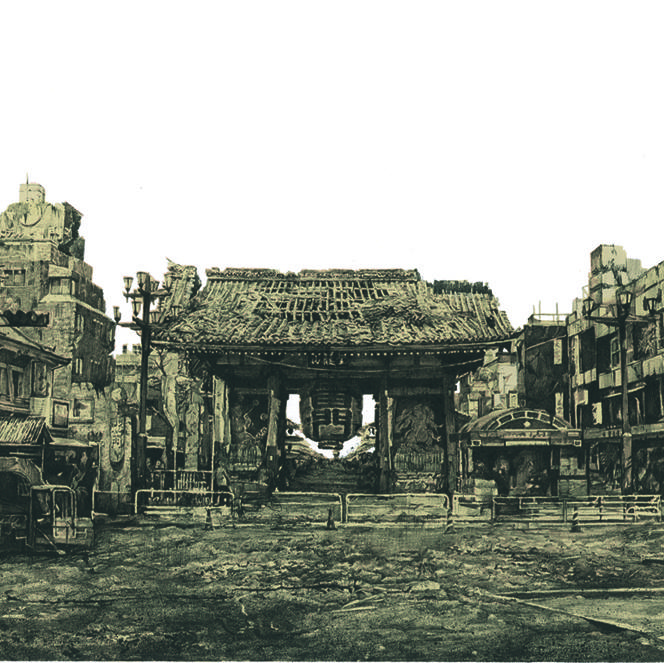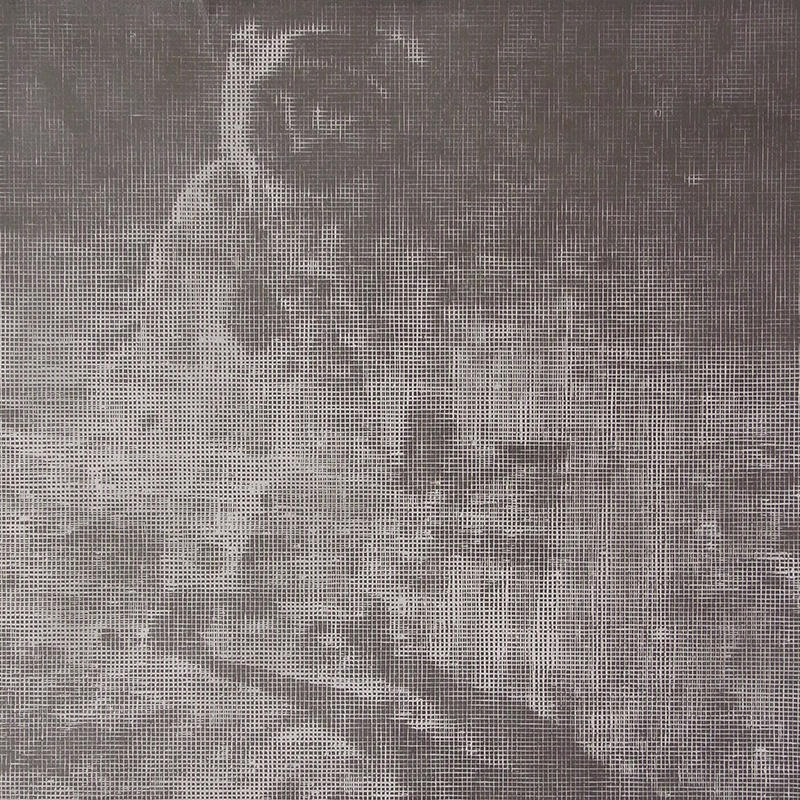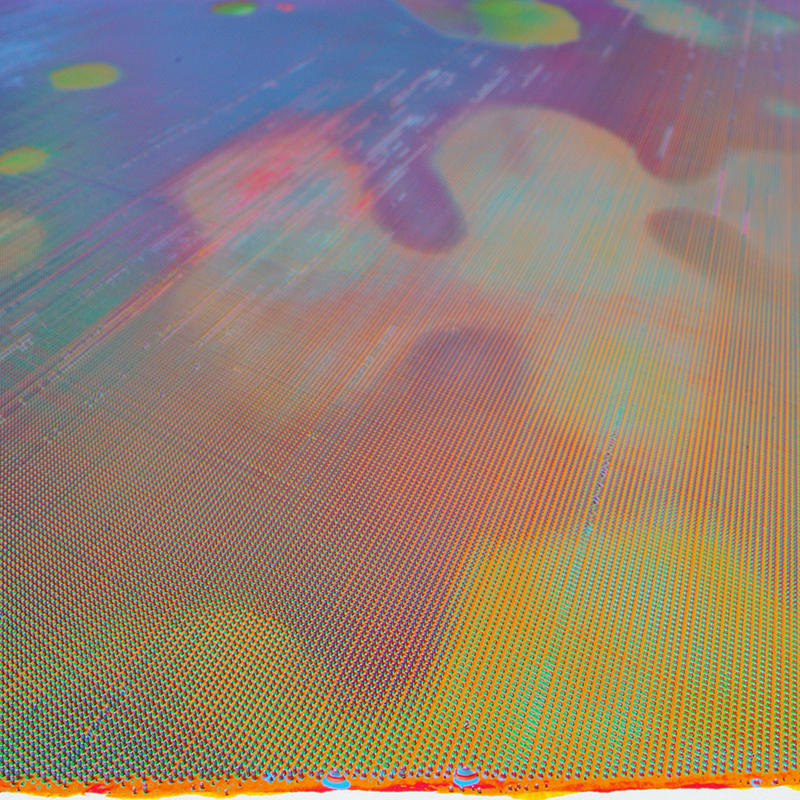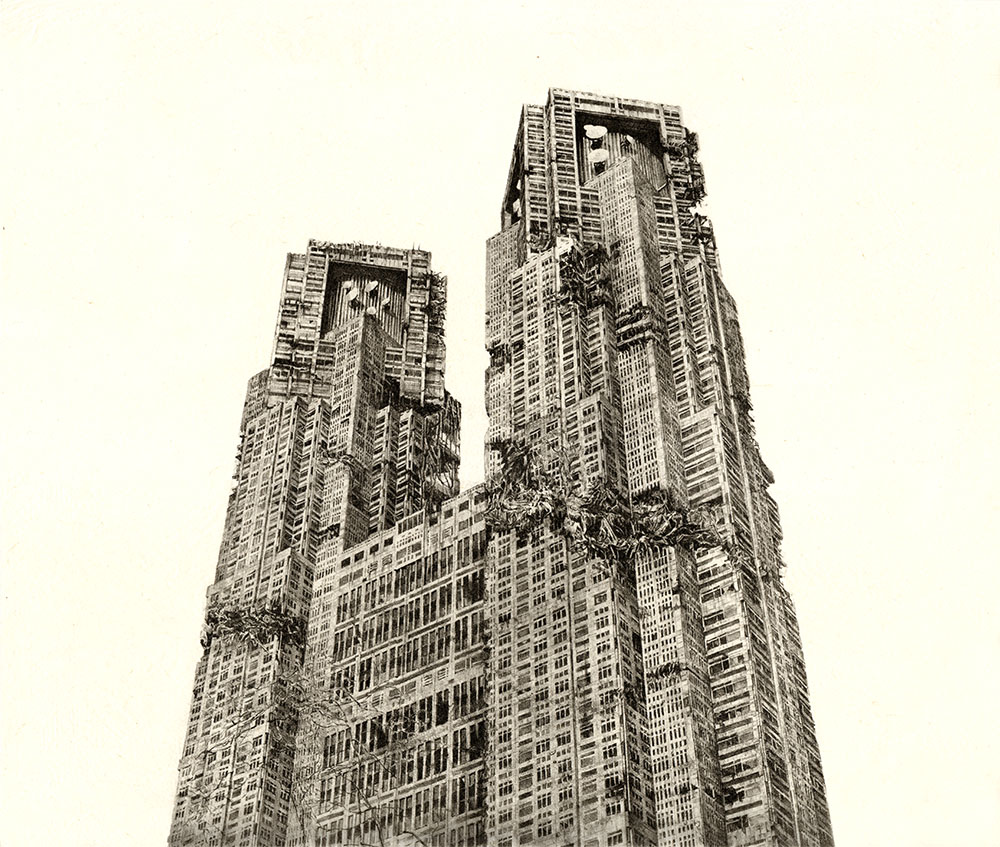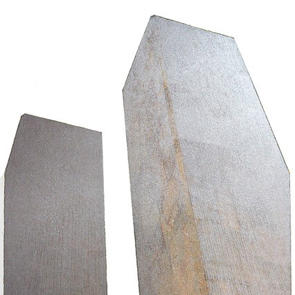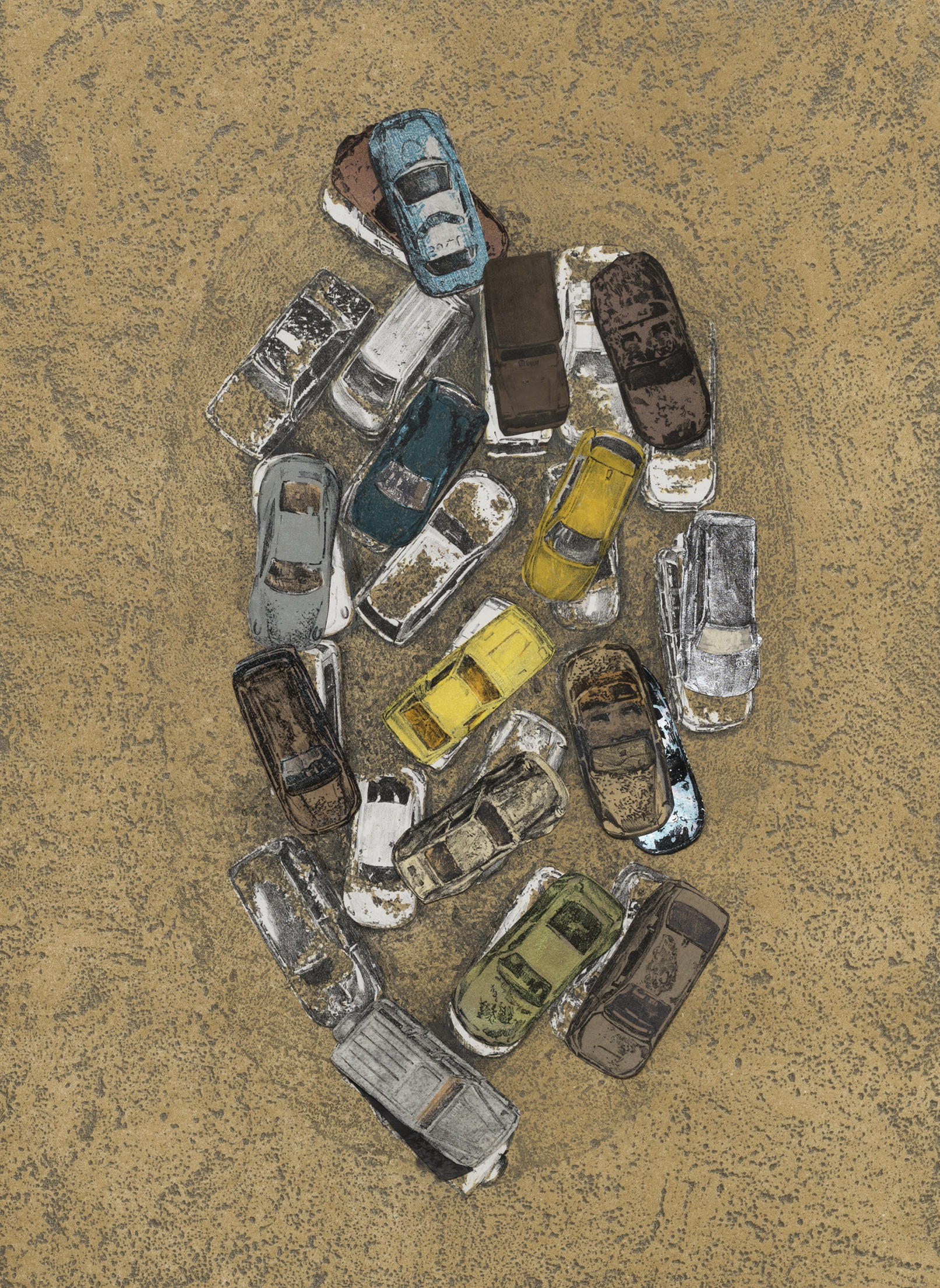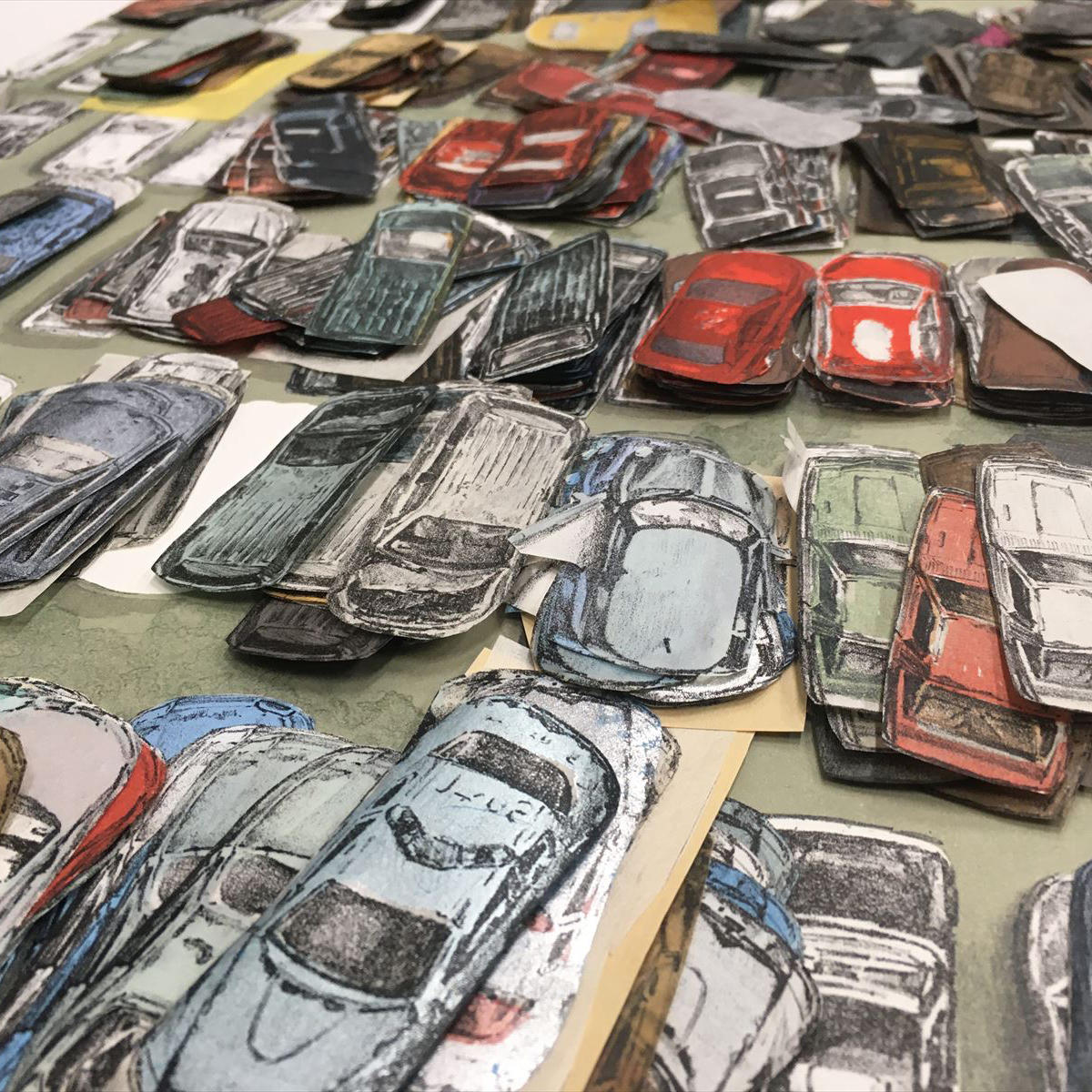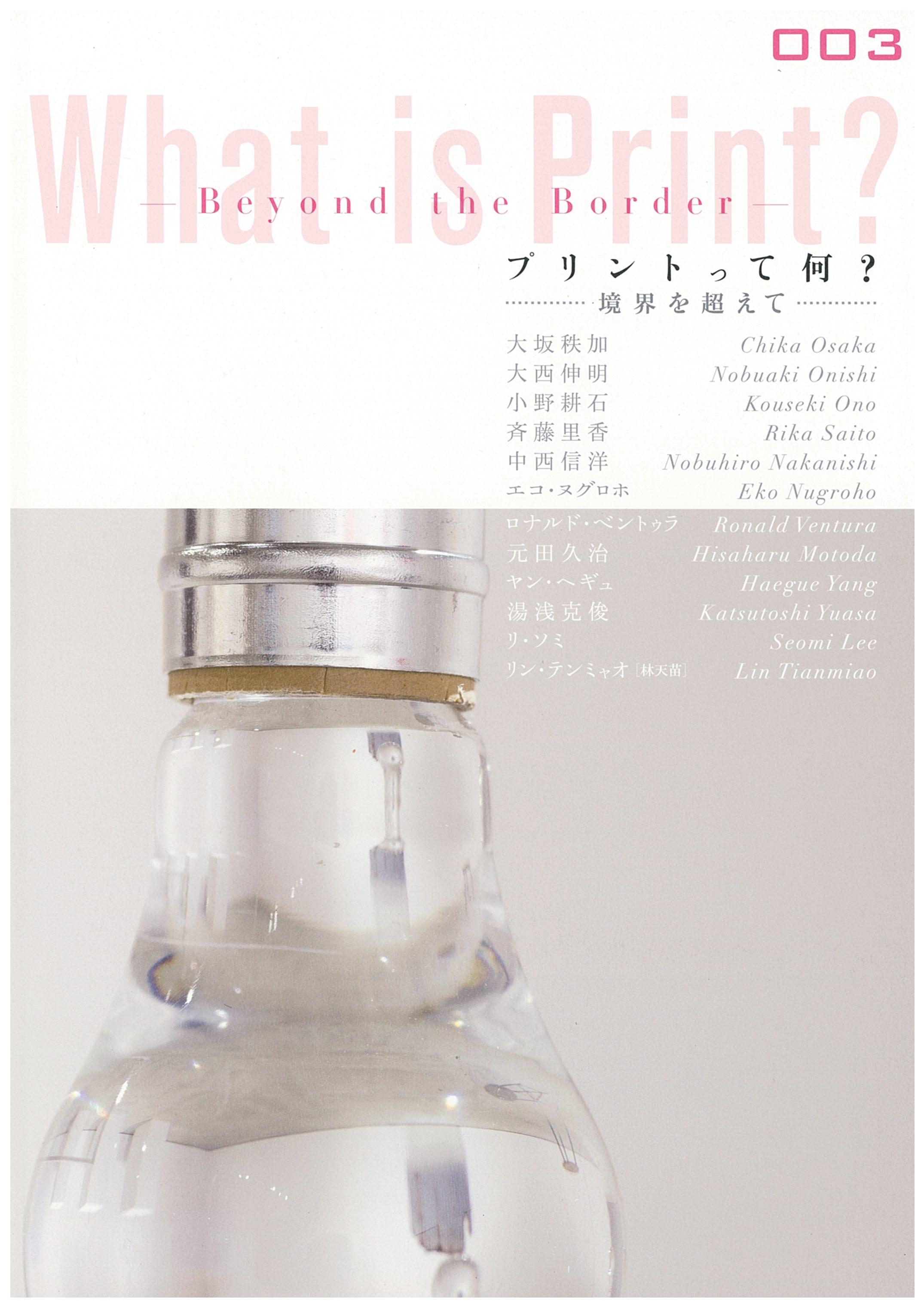Exhibition
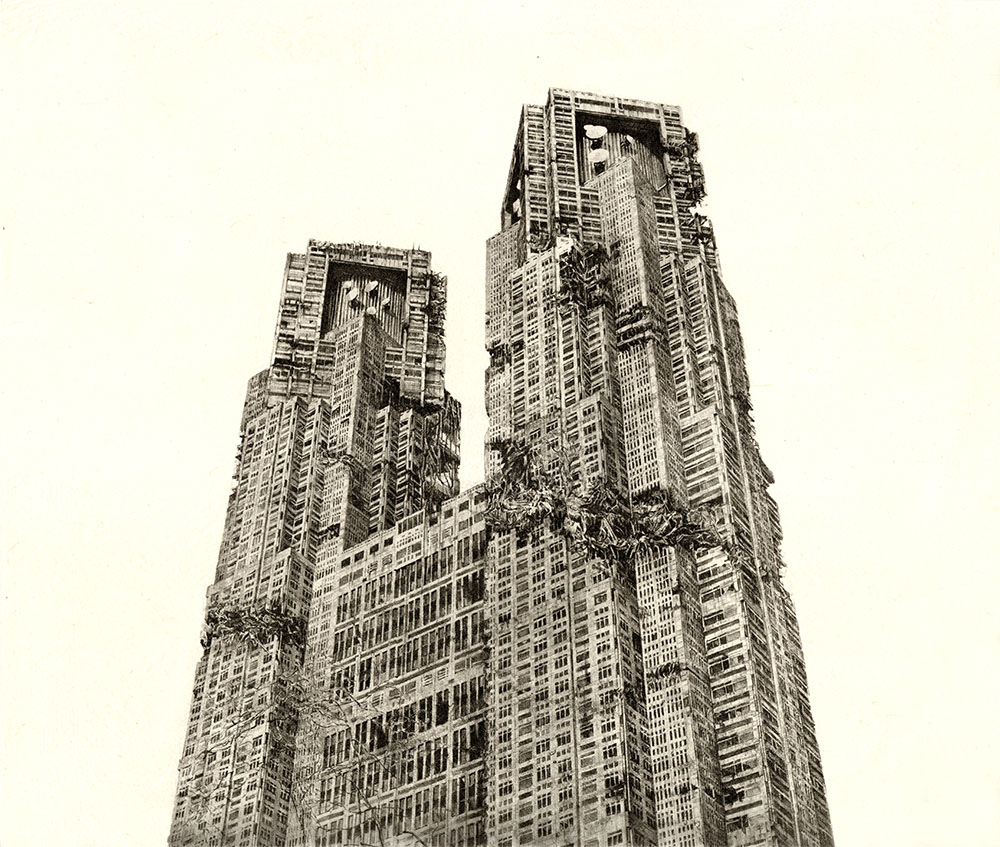
, lithograph
Hisaharu Motoda: Tokyo
June 21 (Fri) - July 14 (Sun)
Motoda Hisaharu exhibition will be held at Art Front Gallery, Daikanyama. Works which depict future landscape of noted places in Tokyo will be exhibited.
| Date | June 21 (Fri) - July 14 (Sun) |
|---|---|
| Hours | 11:00 - 19:00 (closed on Mondays) |
| opening reception | June 21 (Fri) 18:00-20:00 |
| artist at the gallery | artist will be at the gallery in June 30(Sun), July 13(Sat), 14(Sun) |
I have been interested in Hisaharu Motoda for the past few years and have followed development in his work. He draws the familiar landmarks of cities such as Tokyo, but without any trace of people. Buildings and streets are shown severely cracked and the cities are decayed. It may be because of the hard texture of lithographic printing, but the stories of these familiar places seem to be being told with the sense of distance and elapse of time. They are rendered with a cold stare, as if places somehow not here. Unlike European cities, Tokyo keeps changing, leaving its past behind. The pace is such that in just twenty years a site will come to look entirely different. So what appears in these images might not be very far in the future. It might even be imminently connected to the present. Yet the viewer is not told what has occurred to effect the change. Since the Tohoku Earthquake, Motoda’s work has tended to be seen in the context of catastrophic disaster, but it should also be recognised that he shows the degenerated aspect of the present city, in present time, but now abandoned. He offers no causal relationship between before and after ? it’s just like a bottle washed up on a beach.
The root of Motada’s work lies in a misconceived sense of belonging that he felt when he moved to Tokyo from Kumamoto. Tokyo seemed to be growing rapidly in repeated metamorphoses ? a city that kept shedding its skin. Land development changes the appearance of the city, as if Tokyo were changing its clothes. A new residential building, for example, barely retained a trace of what was there before. Many cities have difficulty leaving behind what was embedding in them, when faced with change. Yet Tokyo moves on so easily. Motoda’s images are only possible from an artist who well knows the special features of this city. Motoda also depicts other cities, such as Sydney. Yet with the exception of Beijing Olympic Stadium, the gaze he applies is not as consciously frosty as the one he fixes on Tokyo. His Tokyo images of five years ago show, for example, Shibuya with extreme cracks in its fabric, suggesting his intention to give a forceful sense of collapse. On the other hand, his more recent work shows more objective observations of landscape, and the disintegration of the city seeming to have been caused by lapse of time. Although Motoda has recently begun oil painting, print is a medium where the artist does not directly touch the picture surface, but only transfers the image indirectly, through plates. This allows Motoda to maintain a stiff, frigid and distant relationship to the landscape. The appearance of prints, with their rigid texture is more suitable to actualising the distant sense of heterogeneity that Motoda conveys.
This exhibition focuses on Motoda’s works depicting Tokyo. Hopefully we will rediscover that sense of alienation from the city, which is shared by so many of its urban inhabitants. Also work of a new kind will be shown: the artist was interested in abandoned bricks in an empty plot, and drew a miniature garden based on impressions of them. This is different from the vision of Tokyo drifted ashore like a bottle to a beach. It is like the temporary shelters hand-built on a fire-ravaged field, such as after an air raid. I believe these work tells a new story of Tokyo, made up of fragments of what was there before.
Toshio Kondo, Art Front Gallery
The root of Motada’s work lies in a misconceived sense of belonging that he felt when he moved to Tokyo from Kumamoto. Tokyo seemed to be growing rapidly in repeated metamorphoses ? a city that kept shedding its skin. Land development changes the appearance of the city, as if Tokyo were changing its clothes. A new residential building, for example, barely retained a trace of what was there before. Many cities have difficulty leaving behind what was embedding in them, when faced with change. Yet Tokyo moves on so easily. Motoda’s images are only possible from an artist who well knows the special features of this city. Motoda also depicts other cities, such as Sydney. Yet with the exception of Beijing Olympic Stadium, the gaze he applies is not as consciously frosty as the one he fixes on Tokyo. His Tokyo images of five years ago show, for example, Shibuya with extreme cracks in its fabric, suggesting his intention to give a forceful sense of collapse. On the other hand, his more recent work shows more objective observations of landscape, and the disintegration of the city seeming to have been caused by lapse of time. Although Motoda has recently begun oil painting, print is a medium where the artist does not directly touch the picture surface, but only transfers the image indirectly, through plates. This allows Motoda to maintain a stiff, frigid and distant relationship to the landscape. The appearance of prints, with their rigid texture is more suitable to actualising the distant sense of heterogeneity that Motoda conveys.
This exhibition focuses on Motoda’s works depicting Tokyo. Hopefully we will rediscover that sense of alienation from the city, which is shared by so many of its urban inhabitants. Also work of a new kind will be shown: the artist was interested in abandoned bricks in an empty plot, and drew a miniature garden based on impressions of them. This is different from the vision of Tokyo drifted ashore like a bottle to a beach. It is like the temporary shelters hand-built on a fire-ravaged field, such as after an air raid. I believe these work tells a new story of Tokyo, made up of fragments of what was there before.
Toshio Kondo, Art Front Gallery
Artists
Related News
